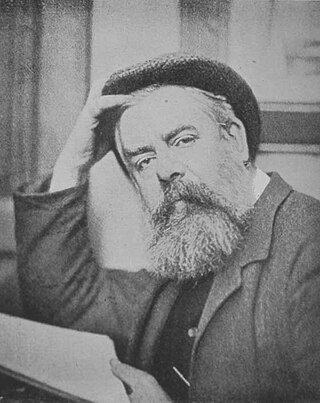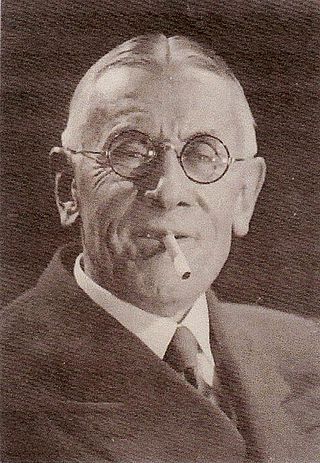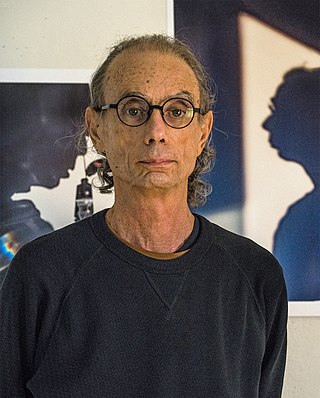Related Research Articles

In photography, exposure is the amount of light per unit area reaching a frame of photographic film or the surface of an electronic image sensor, as determined by shutter speed, lens F-number, and scene luminance. Exposure is measured in lux seconds, and can be computed from exposure value (EV) and scene luminance in a specified region.

An instant camera is a camera which uses self-developing film to create a chemically developed print shortly after taking the picture. Polaroid Corporation pioneered consumer-friendly instant cameras and film, and were followed by various other manufacturers.

Stock photography is the supply of photographs which are often licensed for specific uses. The stock photo industry, which began to gain hold in the 1920s, has established models including traditional macrostock photography, midstock photography, and microstock photography. Conventional stock agencies charge from several hundred to several thousand US dollars per image, while microstock photography may sell for around US$25 cents. Professional stock photographers traditionally place their images with one or more stock agencies on a contractual basis, while stock agencies may accept the high-quality photos of amateur photographers through online submission.

Street photography is photography conducted for art or enquiry that features unmediated chance encounters and random incidents within public places. Although there is a difference between street and candid photography, it is usually subtle with most street photography being candid in nature and some candid photography being classifiable as street photography. Street photography does not necessitate the presence of a street or even the urban environment. Though people usually feature directly, street photography might be absent of people and can be of an object or environment where the image projects a decidedly human character in facsimile or aesthetic.

Joel Meyerowitz is an American street, portrait and landscape photographer. He began photographing in color in 1962 and was an early advocate of the use of color during a time when there was significant resistance to the idea of color photography as serious art. In the early 1970s he taught photography at the Cooper Union in New York City.

Yasuhiro Ishimoto was a Japanese-American photographer. His decades-long career explored expressions of modernist design in traditional architecture, the quiet anxieties of urban life in Tokyo and Chicago, and the camera's capacity to bring out the abstract in the everyday and seemingly concrete fixtures of the world around him.

Wedding photography is a specialty in photography that is primarily focused on the photography of events and activities relating to weddings. It may include other types of portrait photography of the couple before the official wedding day, such as a pre-wedding engagement session. On the wedding day, the photographer(s) will provide portrait photography as well as documentary photography to document the different wedding events and rituals throughout the wedding day(s).

Pierre Lanith Petit was a French photographer. He is sometimes credited as Pierre Lamy Petit.

Frederick Hollyer was an English photographer and engraver known for his photographic reproductions of paintings and drawings, particularly those of the Pre-Raphaelite Brotherhood, and for portraits of literary and artistic figures of late Victorian and Edwardian London.
Graham Howe is a curator, writer, photo-historian, artist, and founder and CEO of Curatorial, Inc., a museum services organization supporting nonprofit traveling exhibitions. Curatorial Inc. manages the E.O. Hoppé Estate Collection and the Paul Outerbridge II Collection among others. Born in Sydney, Australia, Howe now resides in Los Angeles and London.

Lori Nix is an American photographer known for her photographs of handmade dioramas.
Robert J. Hirsch is an American artist, curator, educator, historian, and author. He is best known for his writing about color and digital imaging and about the history of photography, and as an advocate for photographers who offer a haptic, expressionist interpretation of their subject matter.
Wilhelm "Willy" Maywald was a German photographer who was best known for his portrait and fashion photography.
Betty Hahn is an American photographer known for working in alternative and early photographic processes. She completed both her BFA (1963) and MFA (1966) at Indiana University. Initially, Hahn worked in other two-dimensional art mediums before focusing on photography in graduate school. She is well-recognized due to her experimentation with experimental photographic methods which incorporate different forms of media. By transcending traditional concepts of photography, Hahn challenges the viewer not only to assess the content of the image, but also to contemplate the photographic object itself.
Gus Powell (1974) is an American street photographer. He was a member of the In-Public street photography collective.
Thomas O’Conor Sloane, Jr. (1879–1963) was an American photographer.

Léopold-Émile Reutlinger was a French photographer who came from a successful German-Jewish family of photographers. His uncle Charles Reutlinger founded the family's photography business, and his father was the photographer Émile Reutlinger. His son Jean Reutlinger was also a prominent photographer.

David Lebe is an American photographer. He is best known for his experimental images using techniques such as pinhole cameras, hand-painted photographs, photograms, and light drawings. Many of his photographs explore issues of gay identity, homoeroticism, and living with AIDS, linking his work to that of contemporaries such as Robert Mapplethorpe, Peter Hujar, and David Wojnarowicz. Though his style and approach set him apart from these contemporaries, "Lebe is now incontrovertibly part of the history of twentieth-century queer artists."

Bystander: A History of Street Photography is a book by Colin Westerbeck and Joel Meyerowitz, first published in 1994. The survey of street photography includes essays and texts accompanied by illustrative photographs. It was revised and expanded in 2001 and again in 2017.
Edmund David Lyon (1825–1891) was a British photographer and served in British Army. He photographed in more than 100 archeological sites in India.
References
- ↑ "Critical Mass Jurors 2007", photolucida.org. Accessed 2010-12-27.
- ↑ Slant of Light Archived 2011-06-06 at the Wayback Machine
- ↑ "Luminous-Lint". PhotoWings.org. Archived from the original on 2011-07-27. Retrieved 2010-12-19.
- ↑ Robert Hirsch, Light and Lens: Photography in the Digital Age (Amsterdam: Elsevier; Boston: Focal Press, 2007; ISBN 0-240-80855-X), p.329-330; here at Google Books (accessed 2010-12-27).
- ↑ Forster, Alasdair. "Luminous-Lint: A Dynamic Genealogy of the Photograph". Talking Pictures: Interviews with photographers around the world. WordPress.com. Retrieved 14 March 2023.
- ↑ Photo Synthesis series at Luminous-Lint; Westerbeck's introduction to the series.